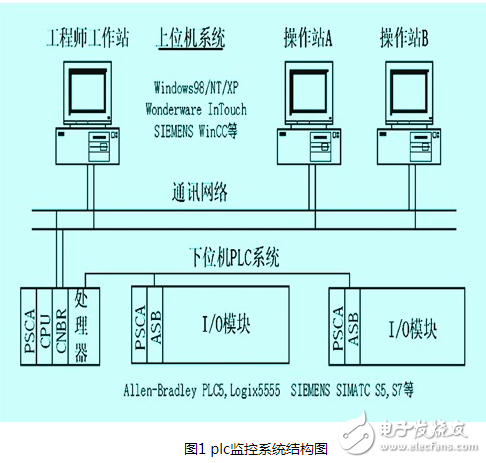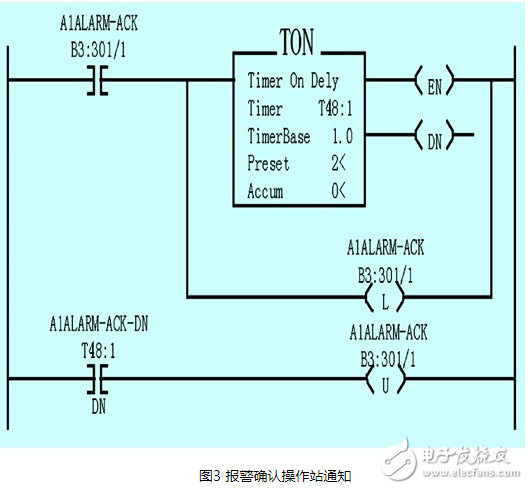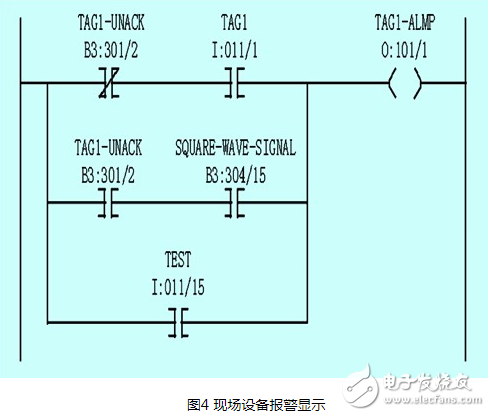1 Introduction
The petrochemical production process is flammable, explosive, toxic, and harmful. In order to ensure the production safety, stability, and long-term production of enterprises, protect national property, ensure the personal safety and health of employees, and improve economic efficiency, it is necessary to strengthen safety production management and continuously improve the level of safety production supervision.
With the continuous improvement of the automation level of the production process, the comprehensive management and importance of equipment are increasing day by day. In the production practice of Guangzhou Petrochemical, in recent years, scada (supervisory control and data acquistion) system has been widely adopted as the production process management automation control system. As a supervisory control and data acquisition system, the scada system organically combines advanced computer technology, industrial control technology and communication technology. It not only has powerful on-site measurement and control functions, but also has strong networking and communication capabilities. It is in the field of automation. One of the important systems widely used. Combined with the production characteristics of our factory, the supervision and management of alarms and events during the production process is an extremely important link. Therefore, this article focuses on the alarm and event management of the scada system.
2 Introduction to the application of scada system in Guangzhou Petrochemical
There are many successful application examples of scada system in Guangzhou Petrochemical Company. The most typical applications include crude oil terminal, oil depot and pipeline monitoring system, crude oil tank farm monitoring system, liquid hydrocarbon tank farm monitoring system, water treatment control system and hood control system Wait. Although the production processes monitored by these systems are different, and the system hardware and scada software used are also different, they generally have the basic structure shown in Figure 1: The scada upper computer system based on the pc windows platform, It is connected to the plc system platform of each mainstream manufacturer through the communication network as the lower computer system.

The scada software of the host computer system mainly uses Wonderware's intouch and Siemens's wincc. The lower computer system platform is various types of plc control systems from mainstream manufacturers. They have their own closed networks and open interfaces. The upper computer usually runs a dedicated upper-layer acquisition module through an i/o interface card or a standard serial port, and collects various parameters of the device in real time from the lower computer. After receiving the information, the host computer system displays it to the user in appropriate forms such as graphics, images or sounds to achieve the purpose of monitoring; at the same time, after the data is processed, it informs the user of the status of various parameters of the device (alarm, normal) Or alarm recovery); the upper computer can also accept instructions from the operator and send the control signal to the lower computer to achieve the purpose of control.
Regarding the operation mode of the equipment, the scada system can easily realize three operation modes:
"Remote operation"—that is, the start, stop, and switch of field equipment, valves, etc. can be operated on the operator station in the field control room, that is, operation on the computer screen.
"On-site operation"-some equipment can also be operated on-site, operating on the buttons on the on-site electrical cabinet or the operation box next to the machine.
"Automatic operation"-some processes, such as caused by external reasons such as low liquid level, directly output and stop the pump through the plc system to protect the safety of on-site equipment and processes.
3 Alarm and event management of scada system
3.1 The composition of the system's software and hardware
As an example cited in this section, the system's software and hardware components are the same as Figure 1. The scada software package used by the host computer of the system includes intouch8.0 from Wonderware and rslogix5 from Rockwell. They can be run on any platform of pc-base. Each single function design is a modular design. Users can Various new developments and modifications are carried out in the system without affecting the normal operation of the system; and the lower computer of the system adopts the plc5 control system of allen-bradley company.
3.2 System alarms and events
Intouch has two ways to notify the operator of process activities: alarms and events. An alarm is a warning issued when there is a problem with the process status and requires the operator to respond at the same time. When a process value exceeds the user-defined limit, for example, the analog quantity exceeds the upper limit, the alarm is triggered. It triggers an unacknowledged alarm state and can notify the operator of what is wrong. If you add the configuration, intouch can write the alarm to the disk file and print it out. Once the operator confirms the alarm, the system returns to the confirmation state. The event represents the message in the normal state of the system. When a certain system condition is met, the event is triggered. It does not require the operator to respond. The query and recording methods are the same as the alarm.
3.3 Display and query of alarms and events
Intouch provides two alarm display systems: standard alarm display and distributed alarm display. Because the distributed alarm display system has richer interfaces and more powerful functions, and it is more convenient and flexible to perform various queries at runtime, it is recommended to use distributed alarm display objects even in a stand-alone application system. Figure 2 shows a schematic diagram of the alarm display screen of a typical application.

In order to facilitate the operator's various classification queries and operations during the operation of the system, many function buttons are set in the alarm display screen of Figure 2 (the user can increase or decrease according to the actual requirements of each system). In this example, the process system is only divided into three units: a1, a2, and a3 (also called alarm group in intouch). The following are the specific implementation points:
First, create the message tagname alarm_group and querytype in the tagname dictionary. alarm_group is used to define the name of the alarm group: in the picture in Figure 2, for example, press the unit alarm button "a1" to execute the acTIon script: alarm_group="a1";
Press the unit alarm button "a2" to execute the acTIon script: alarm_group="a2";
Press "Return to System Alarm Summary" to execute the acTIon script: alarm_group="$system" etc. querytype is used to define the query type: press the "alarm summary" button to execute the acTIon script: querytype="summ";
Press the "Alarm History" button to execute the action script: querytype="hist". Press the above button and the "a3" button to execute the common action script: almquery ("almobj_main", "intouch!" + alarm_group, 1, 999, "all", querytype) to dynamically switch the alarm display screen, script The almobj_main is the name of the alarm object embedded in Figure 2.
In order to confirm the alarm that occurred in the system, link the action script on the "Confirm system-wide alarm" button: $system.ack=1; link the action script on the "Confirm the current alarm group alarm" button: groupvar.name=alarm_group, groupvar. ack=1; Among them, groupvar is the group variable of the alarm group. In addition, in order to facilitate the operation of the operator, add color animation links to the unit alarm buttons a1, a2, and a3 according to whether there are unconfirmed alarms in the corresponding alarm group, so that the operator can intuitively understand the alarm status of the system unit and can directly enter the unconfirmed alarms The unit detail display screen of the unit, confirm the alarm of the unit.
3.4 Operation station notification for alarm confirmation
The design of intouch supports the creation of standalone and distributed applications. Distributed application systems usually have several layers of networks, and distributed applications are much more complicated, but its distributed alarm function can automatically realize the "notification" function of alarm confirmation between each operating station and server. On the contrary, stand-alone applications are generally easier to configure, require minimal network, and only need simple maintenance. Each workstation works independently and automatically realizes the redundancy function of the operating station. Therefore, most of the small and medium-sized scada systems configure the upper computer system as a stand-alone application.
However, for stand-alone applications, the alarm confirmation of each operating station in the system has nothing to do with other operating stations in the intouch application. In order to realize the "notification" function similar to the alarm confirmation of the distributed application, it is necessary to manually add the operation station notification function of the alarm confirmation in the independent application system.
Take the alarm confirmation of unit a1 as an example, all the alarms of this unit belong to the alarm group a1. First, create a discrete i/o tagname in the tagname dictionary: a1alarm-ack, and its dde access item is: b3:301/1. And add a script in the apllication script: a1alarm-ack = a1.ack. And add the ladder shown in Figure 3 to the PLC ladder diagram program.

In this way, no matter which operating station in the system triggers the alarm confirmation of the a1 unit: a1.ack=1, then a1alarm-ack=1, which will make the bit b3:301/1=1 in the plc processor, automatically through dde Update the value of the tagname a1alarm-ack of other operating stations to confirm all the alarms of the a1 unit of all workstations in the system (a1.ack=1). The function of the timer t48:1 in Figure 3 is to automatically unlock the plc bit b3:301/1 2 seconds after the alarm confirmation is triggered to accept the new alarm of the a1 unit.
3.5 Alarm display of field equipment
In the transformation of the control system of the device, the process often requires the preservation of the on-site alarm indicator. Now take the instrument tag1 as an example to illustrate the realization of an on-site alarm indicator: First, create discrete i/o tagnames in the tagname dictionary: tag1-unack, tag1-lamp, and their dde access items are b3:301/2. , O:101/1. Add the following rungs in the PLC ladder diagram program:
In Figure 4, tag1 is the alarm source of the alarm indicator tag1-lamp, and o:101/1 is the output channel of the alarm indicator. The tag name square-wave-signal is a square wave signal source with a frequency of 1hz shared by the system (it is implemented in other steps of the plc ladder diagram by means of a timer). The function of the ladder in Figure 4 is: when there is an unacknowledged alarm of tag1 in the system, tag1-unack=1, the alarm indicator tag1-lamp outputs a flash signal with a frequency of 1hz to the on-site alarm indication panel; when the tag1 alarm has been confirmed , Tag1=1 and tag1-unack=0, then tag1-lamp outputs an alarm always-on signal; when normal o:101/1=0, tag1-lamp outputs an alarm off signal. test is the public test light button on the on-site alarm indicator panel.

In order to continuously scan whether there is a new unacknowledged alarm state for the instrument tag, it is necessary to add a statement in the runtime script of the apllication script: tag1-unack=tag1.unack.
4 Conclusion
The alarm and event management method discussed in this article integrates the relevant methods and skills of the current scada systems of Guangzhou Petrochemical Corporation. It has been proven effective in many years of production practice. For other small and medium-sized scada-systems. PLC transformation has universal reference significance.
tweeter speaker is designed to reproduce high audio frequencies, typically from around 2,000 to 20,000 Hz (2KHz to 20KHz).
Traditional speakers produce sound by using an electromagnet to move a flexible cone back and forth. They use drivers to help translate electrical signals into physical vibrations so that you can hear recorded sounds. Tweeters are one of the three main speaker types.
Any recording is a very complex combination of different tones, frequencies, and other characteristics. Music is made by different instruments, the voice of singers, and items added when music is recorded. Without tweeters, you will be neglecting a crisp and well-detailed sound to your ears. I`m pretty sure you want a better experience, not a bad one.
Our company's tweeter speaker products not only have high quality and competitive prices, is a Chinese supplier trusted by buyers all over the world market, choose us and you have chosen a bright and brilliant future
"Tweeter Speaker ,Tweeter Driver ,Kicker Tweeters,Tweeter Audax"
NINGBO LOUD&CLEAR ELECTRONICS CO.,LIMITED , https://www.loudclearaudio.com
